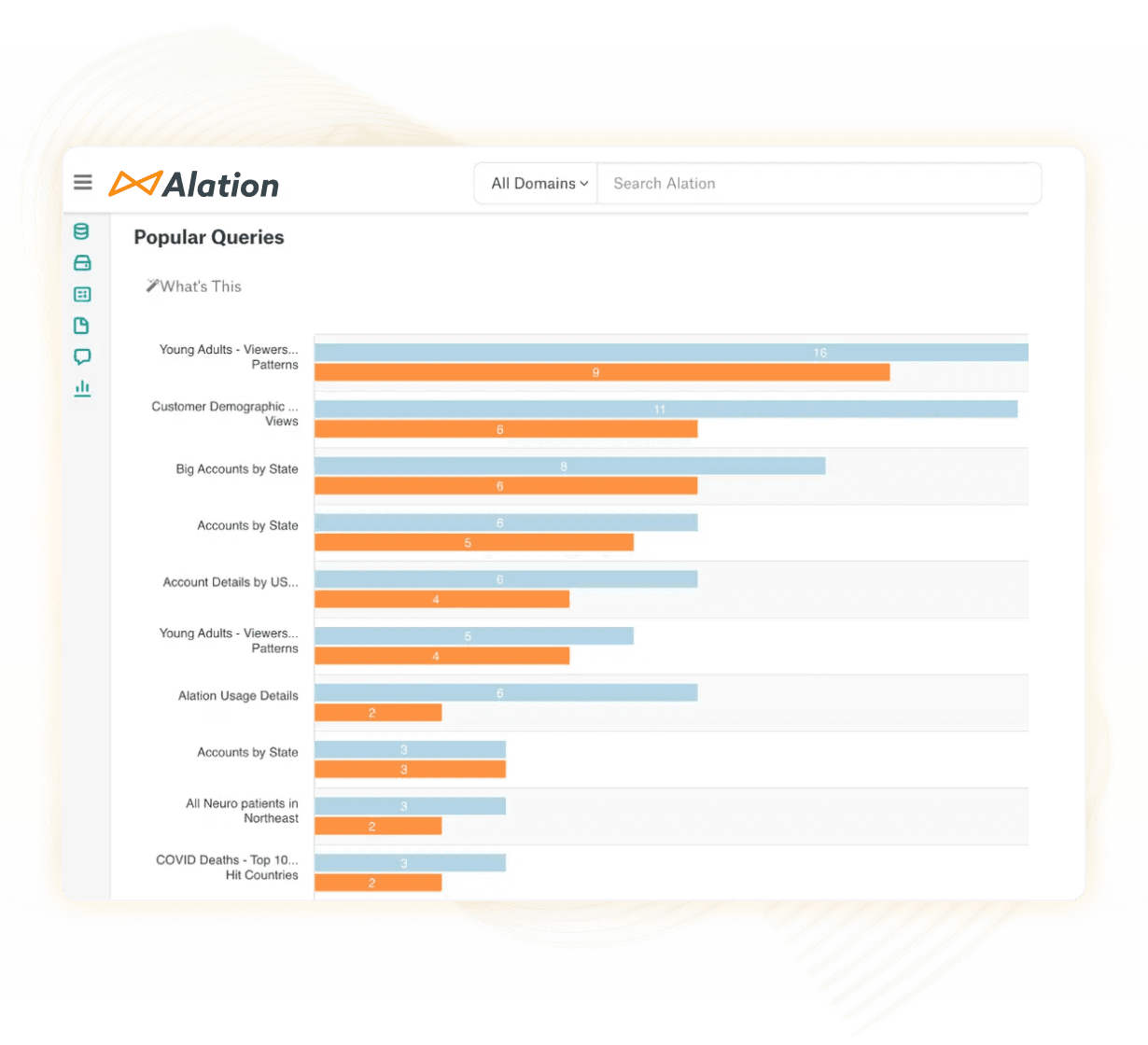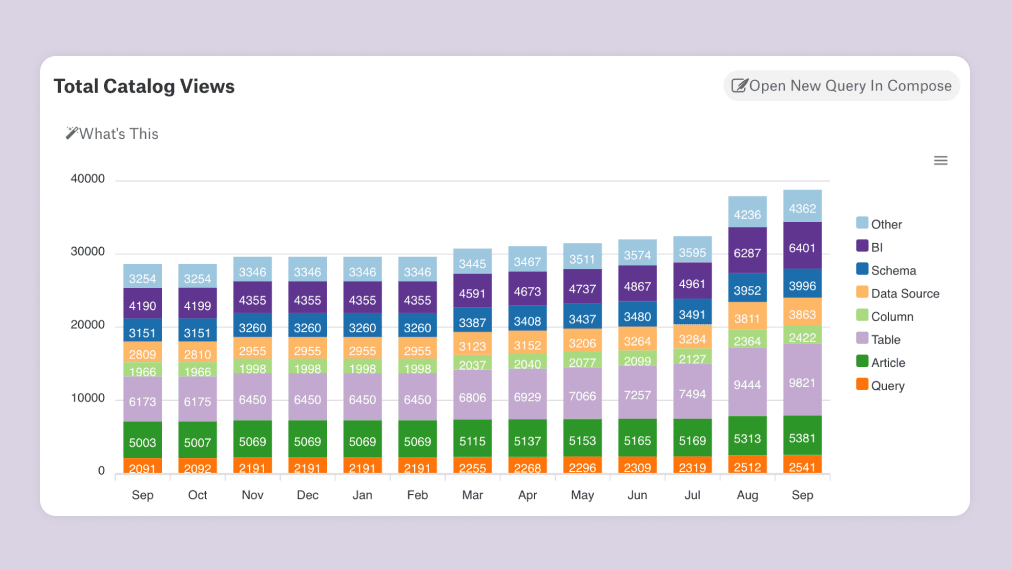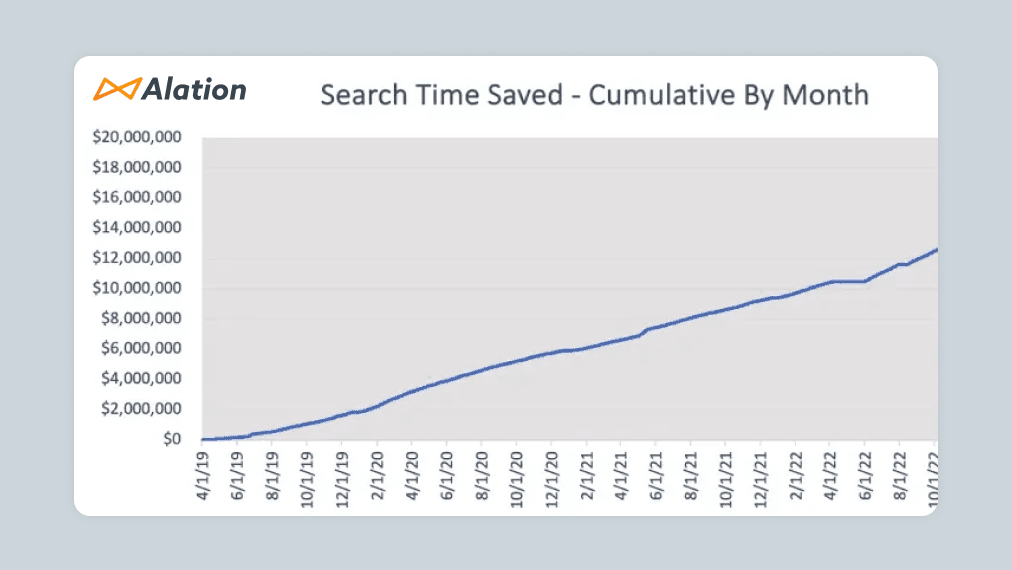Alation Analytics Cloud
Data Maturity Matters
Enable better business outcomes by advancing the data maturity of your organization. Drive purposeful, transparent growth with analytics.


A scorecard for your data program
Track and guide your data maturity progress. See metrics like total assets curated, total active users, top queries, and more. Use these key performance indicators to drive data use and support better decision-making.

Track enterprise adoption
Monitor and understand the value of data intelligence through platform adoption by tracking the actual use of search and discovery, trust flags, self-service analytics, and platform collaboration. Maximize business value while enabling your teams to optimize and reuse queries, reducing costs. Guide future deployment decisions with clarity and confidence.

Framework to convey business value
Articulate ROI describing time and money saved through faster data search, comprehension, and query writing. Reveal the power of data literacy, discovery, leadership, and governance for business outcomes.
The Business Value of Data Maturity
50,268
Search hours saved1
100,537
Comprehension hours saved1
12,222
Query writing hours saved1
$4.9M
ROI1
- 1.
Source: Alation Business Value Engagement 2022, European convenience store and supermarket brand analysis

"[Our data catalog] allows the analyst to quickly find the data and now spend 80% of their time doing analysis on that data."
Patrick Dever
Former Chief Data Strategist
Avista